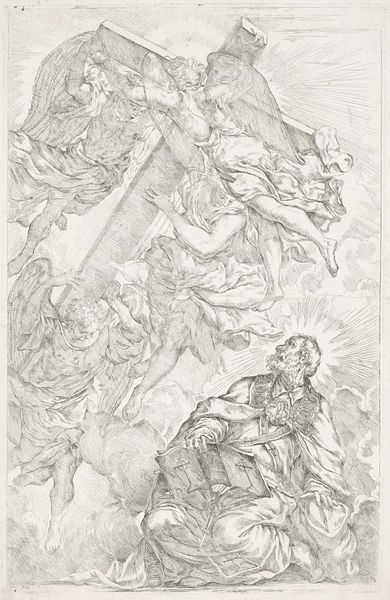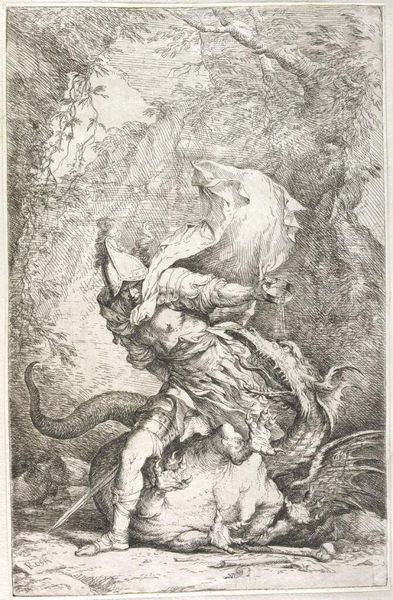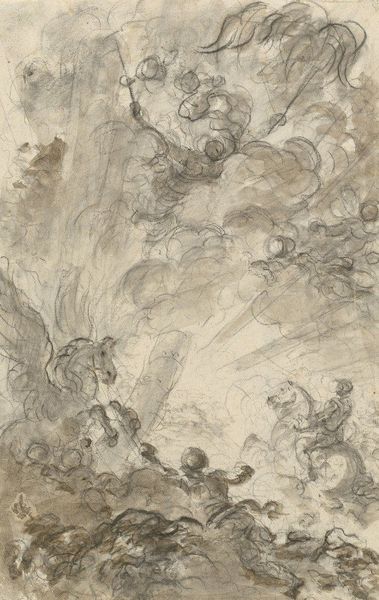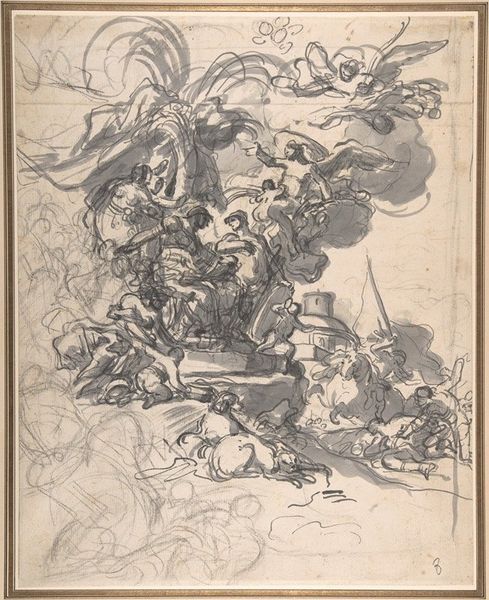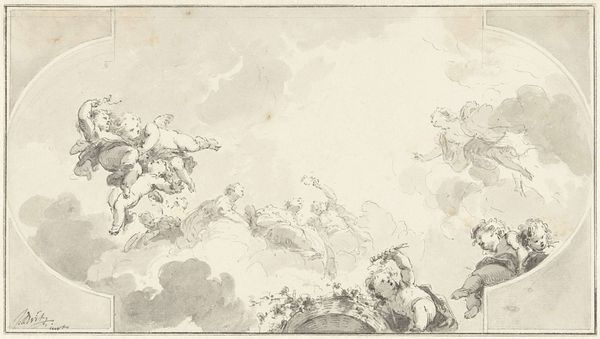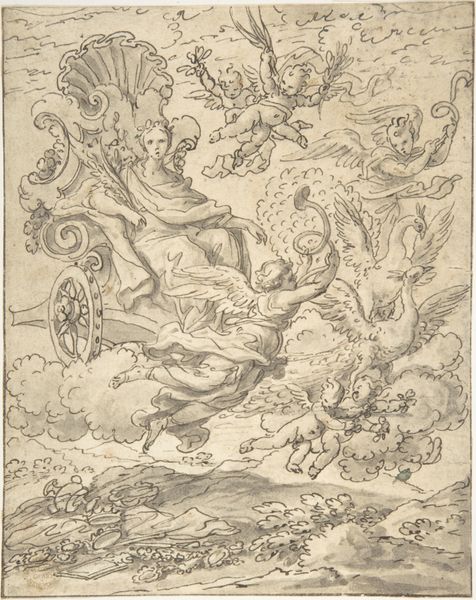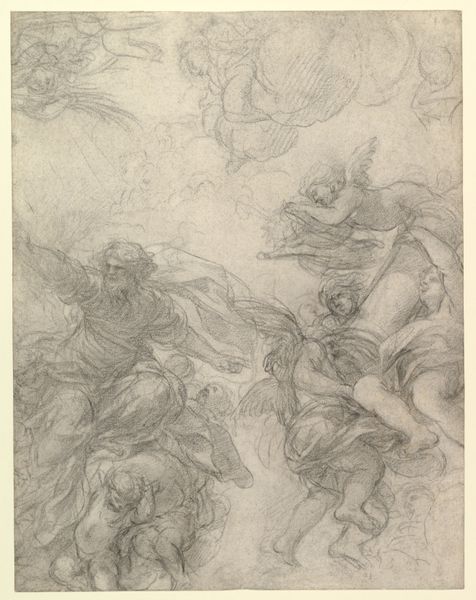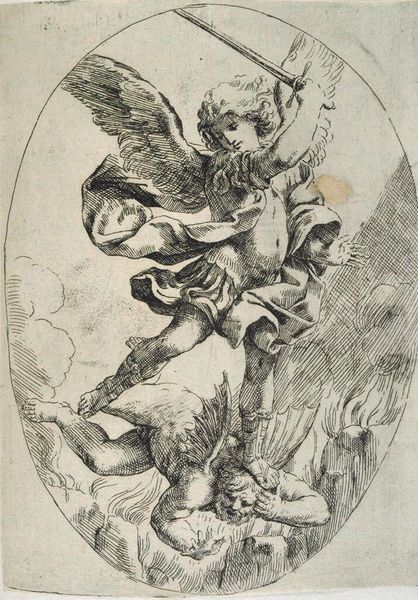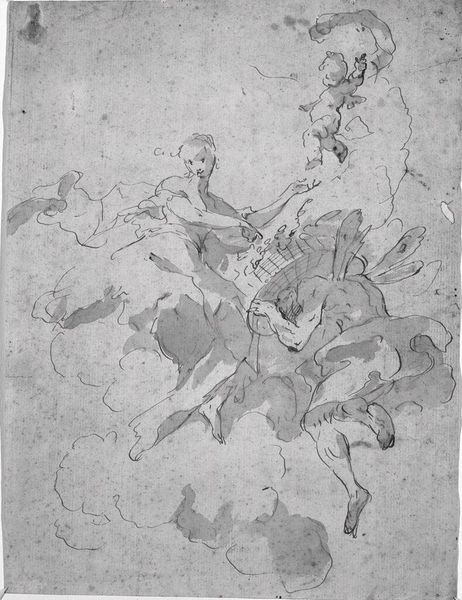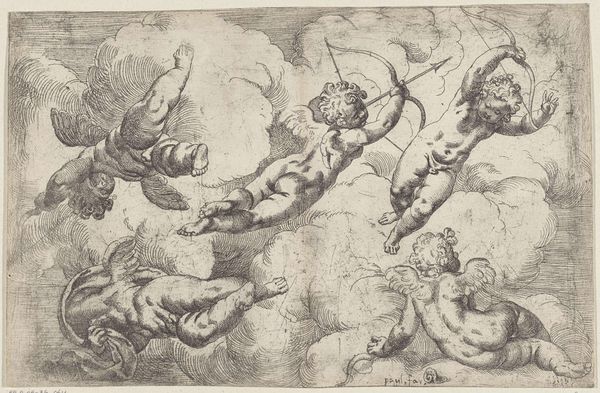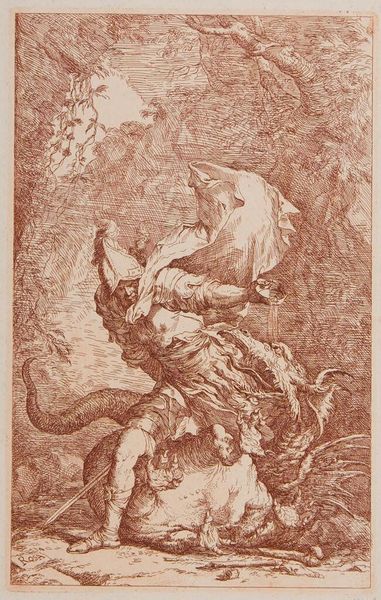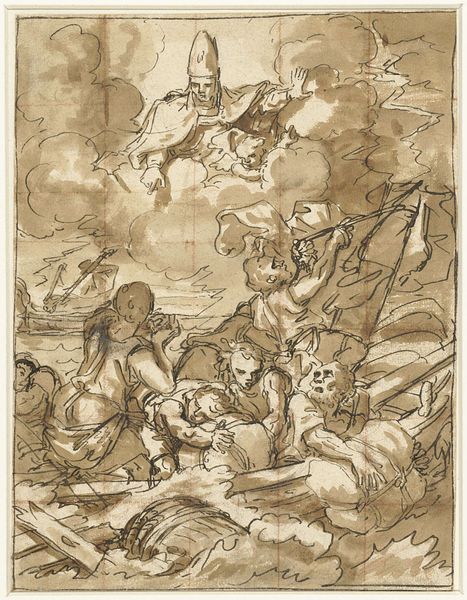
drawing, print, paper, ink, chalk, pen
#
drawing
#
allegory
#
baroque
# print
#
pen sketch
#
figuration
#
paper
#
ink
#
chalk
#
pen
#
northern-renaissance
#
angel
Dimensions: 261 × 210 mm
Copyright: Public Domain
Editor: This drawing, "The Holy Ghost and Angels," dates from the 1720s or 30s and is attributed to Giovanni Domenico Ferretti. It's rendered in ink, chalk, and pen on paper, and is currently at the Art Institute of Chicago. The figures seem to float ethereally. What symbols do you recognize in this artwork? Curator: Ah, yes, the dance of symbolic forms! Note first the dove, centered, wings outstretched. From a theological standpoint, the dove is immediately recognizable as a visual signifier of the Holy Spirit. Its presence evokes themes of divine love and purification, dating back millennia. Consider also the positioning of the angels—how do they frame the dove, both protecting and exalting it? Editor: I see them more clearly now, almost as if they're radiating outwards. How would that composition add to the meaning? Curator: The Baroque style uses dramatic movement, not as mere decoration, but as a sign of religious zeal. These angels are actively engaging with the divine presence. Their gestures create a kinetic energy that directs our attention. The swirls of the chalk amplify the drawing's emotional charge, reflecting a state of spiritual ecstasy, but is it only that? What earthly functions did angels serve, for example? Editor: Hmm. Messengers? Guides? Protectors? So perhaps we're not just seeing spiritual ecstasy but also divine intervention? Curator: Precisely. Remember, Ferretti was working within a cultural context steeped in symbolism. Each element is carefully considered, contributing to the drawing’s layered meaning. It invites us to reflect not only on the divine, but the interplay between heaven and Earth and our place within that sacred space. Editor: That connection wasn't immediately obvious to me, but now I can see how the interplay of familiar symbols really guides interpretation here. Thanks for expanding my understanding! Curator: My pleasure! The image reminds us that, from its original era to the present day, symbolic vocabularies reflect, as much as shape, a given culture's worldview.
Comments
No comments
Be the first to comment and join the conversation on the ultimate creative platform.
